This article was co-authored by Shira Tsvi. Shira Tsvi is a Personal Trainer and Fitness Instructor with over 7 years of personal training experience and over 2 years leading a group training department. Shira is certified by the National College of Exercise Professionals and the Orde Wingate Institute for Physical Education and Sports in Israel. Her practice is based in the San Francisco Bay Area.
There are 12 references cited in this article, which can be found at the bottom of the page.
wikiHow marks an article as reader-approved once it receives enough positive feedback. In this case, 100% of readers who voted found the article helpful, earning it our reader-approved status.
This article has been viewed 192,822 times.
Suffering from back pain is a common complaint among adults, especially those who have to sit long hours at work.[1] But sitting at a desk all day long with back pain can not only be uncomfortable, it may also make you less productive. By sitting properly in your work space and taking steps to relieve the pain, you may be able to effectively get through the day and alleviate any discomfort you are experiencing.
Steps
Sitting Comfortably at Your Desk
-
1Support your lower back. One of the biggest causes of back pain at work is not properly supporting your lower back. It’s best to have an adjustable chair with support, but if this isn’t available, you can modify your desk space to make yourself more comfortable.[2]
- If your chair doesn’t have back support, consider putting a pillow between your back and the chair to give your lower back extra support.
- You can also use this pillow to hold in an ice pack to help further alleviate your pain.
- A footrest may help to support your lower back further.[3]
-
2Adjust your chair. Having a properly adjusted chair can reduce the strain on your back. Adjusting your chair to the proper height for you may not only reduce the strain on your back, but also relieve your discomfort.[4]
- You should adjust the height of your chair so that you can type with your wrists and forearms straight and parallel to the ground.[5] A good way to judge if your height is correct is to see if your elbows are by your body and form an L-shape at your joint.[6]
- Change the back position and tilt of the chair so that you're comfortable and your back is supported.[7]
Advertisement -
3Rest your feet flat on the ground. Once you’ve adjusted the height of your chair, your feet should be resting flat on the ground. This can help keep your back in a neutral position and relieve your discomfort.[8]
-
4Place your computer at an optimal level. Having your computer and its accessories close to you can help ensure that you are sitting properly and not having to contort your head and neck to work. This in turn can help relieve and prevent back pain.[11]
- Your screen should be at eye level about an arm’s length away.[12]
- Your keyboard should be 4–6 inches in front of you.[13]
- Keep your mouse as close to you as possible so that you’re not bending your back in any way to reach it.[14]
- If you have papers on your desk while typing, try attaching them with a clip to your computer screen. That way, you won’t be bending your neck to the side while typing.
-
5Use a headset. If you speak on the phone frequently, it may make you bend your head and neck in ways that cause you discomfort. Use a headset instead of the physical phone to help sit up properly.[15]
-
6Schedule intermittent breaks from sitting. If you sit for long periods of time, it’s important to take breaks during the day. This will stretch out and relax your muscles, and may also help further relieve back pain.[16]
- Take a five minute walking break every hour if possible. During your lunch break, considering going for a walk or doing some other type of activity to stretch and relax your back.
- Another option at break time is to stand up and realign the body before sitting. When standing, gently squeeze the buttocks for 10 seconds. Keep the stomach tight and gently roll your shoulders back, and then let your shoulders relax. These movements helps to contract and activate muscles that may not get any work while sitting.
Relieving Back Pain
-
1Apply an ice pack on your back. Once you’re sitting comfortably, place an ice pack on the area of your back that is causing you pain. This may offer you some immediate pain relief and reduce inflammation that is exacerbating your discomfort.[17]
- Keep the pack on the affected area for at least 20 minutes per session.[18] Doing it for any less time may only cool your skin and not have any affect on your underlying muscle tissue.[19]
- You can ice your back up to five times a day with at least 45 minutes in between treatments.[20]
- If you are having a hard time keeping the pack on your back, try keeping it in place with a towel or some elastic wrap.
-
2Employ heat therapy. Using heat on tense muscles not only can help relieve your pain, but may also relax your muscles. From heating pads to heat rubs, there are many different types of heat treatments that can help relieve your back pain while sitting at work.[21]
- Fill a hot water bottle or get a heating pad and place it on your chair on the affected area.
- Over the counter heat rubs may also help alleviate pain.
-
3Take a pain reliever. Try taking an over the counter pain reliever. It may relieve your pain and also help control inflammation.[22]
- Take ibuprofen, aspirin, or naproxen sodium, which are called NSAIDs (Non-Steroidal Anti-Inflammatory Drugs), to help relieve your back pain. You can also try taking acetaminophen.[23]
- Ibuprofen and NSAIDs may also help relieve inflammation.[24]
- Consider combining your ice pack with a pain reliever while you’re at work to get maximum pain relieving benefits.
-
4Ingest a muscle relaxant. If pain relievers aren’t alleviating your pain, consider taking a muscle relaxant. Your doctor will need to prescribe a muscle relaxant, so make sure you speak to her about why you need them.[25]
- Be aware that muscle relaxants can make you dizzy and sleepy, and may affect your performance at work.[26]
-
5Give yourself a mini-massage. Massaging the area of your back causing you pain may help relax you and relieve any discomfort you have.[27] You don’t need to do anything in-depth or complicated to reap the benefits of massaging your back.
- Gently rub any area causing you discomfort if you can reach it.
- Consider using a tennis ball to help relieve your pain. You can place the ball between your back and a wall or your chair and gently move back and forth to give yourself a massage.
-
6Perform acupressure on yourself. Stimulating acupressure points on your back may to help relieve pain. There are four points on the lower back that are associated with alleviating back pain.[28]
- The acupressure point for back pain are located near the spine at about waist level and between the second and third lumbar vertebrae.[29]
- Gently press on these points to help relieve your pain.
- You can find the exact spots which to stimulate at http://acupressurepointsguide.com/most-important-acupressure-points-for-back-pain/
-
7Perform back stretches while sitting. Although it’s important to get up every hour to keep your back mobile, you can also perform low back stretches while sitting.
- Sit with your feet flat. Reach over to the right and place both your hands on the arm rest.
- Slowly pull your body to the same side, rotating until you feel a relaxing stretch.
- Hold this position for at least 30 seconds. Repeat again two to three more times. Then repeat to the other side.
- Overall, stretching is a helpful exercise for lower back pain. However, if your pain is related to an injury, it is better to consult with a specialist.[30]
-
8Perform hamstring stretches while sitting. The hamstring muscles can get tight while sitting. Performing dynamic stretches can help you keep them loose, reducing tightness in the back.
- Sit with feet flat on the ground, looking straight ahead.
- Slowly begin straightening your right leg for five seconds. Once the leg is straight, hold for a second and then gradually bring it back down for another count of five. Repeat repeat more times. Then repeat with the other leg.
What Yoga Poses Can I Do When Sitting At The Computer?
Things You'll Need
- Reclining desk chair
- Lumbar support
- Foot rest
- Headset
- Ice pack
- Pain relievers
References
- ↑ https://www.versusarthritis.org/about-arthritis/conditions/back-pain/
- ↑ http://www.nhs.uk/Livewell/workplacehealth/Pages/howtositcorrectly.aspx
- ↑ http://www.nhs.uk/Livewell/workplacehealth/Pages/howtositcorrectly.aspx
- ↑ http://www.nhs.uk/Livewell/workplacehealth/Pages/howtositcorrectly.aspx
- ↑ http://www.nhs.uk/Livewell/workplacehealth/Pages/howtositcorrectly.aspx
- ↑ http://www.nhs.uk/Livewell/workplacehealth/Pages/howtositcorrectly.aspx
- ↑ http://www.nhs.uk/Livewell/workplacehealth/Pages/howtositcorrectly.aspx
- ↑ http://www.nhs.uk/Livewell/workplacehealth/Pages/howtositcorrectly.aspx
- ↑ http://www.nhs.uk/Livewell/workplacehealth/Pages/howtositcorrectly.aspx
- ↑ http://www.nhs.uk/Livewell/workplacehealth/Pages/howtositcorrectly.aspx
- ↑ http://www.nhs.uk/Livewell/workplacehealth/Pages/howtositcorrectly.aspx
- ↑ http://www.nhs.uk/Livewell/workplacehealth/Pages/howtositcorrectly.aspx
- ↑ http://www.nhs.uk/Livewell/workplacehealth/Pages/howtositcorrectly.aspx
- ↑ http://www.nhs.uk/Livewell/workplacehealth/Pages/howtositcorrectly.aspx
- ↑ http://www.nhs.uk/Livewell/workplacehealth/Pages/howtositcorrectly.aspx
- ↑ http://www.foxnews.com/health/2012/04/04/best-ways-to-reduce-back-pain-at-your-desk-job/
- ↑ http://www.spine-health.com/treatment/heat-therapy-cold-therapy/ice-massage-back-pain-relief
- ↑ http://www.spine-health.com/treatment/heat-therapy-cold-therapy/ice-massage-back-pain-relief
- ↑ http://www.runnersworld.com/injury-treatment/how-to-ice-a-running-injury
- ↑ http://www.runnersworld.com/injury-treatment/how-to-ice-a-running-injury
- ↑ https://www.versusarthritis.org/about-arthritis/conditions/back-pain/
- ↑ https://www.versusarthritis.org/about-arthritis/conditions/back-pain/
- ↑ https://www.versusarthritis.org/about-arthritis/conditions/back-pain/
- ↑ https://my.clevelandclinic.org/health/drugs/11086-non-steroidal-anti-inflammatory-medicines-nsaids
- ↑ https://www.versusarthritis.org/about-arthritis/conditions/back-pain/
- ↑ https://www.spine-health.com/treatment/pain-medication/side-effects-and-risks-muscle-relaxers
- ↑ https://my.clevelandclinic.org/health/diseases/7936-lower-back-pain
- ↑ http://acupressurepointsguide.com/most-important-acupressure-points-for-back-pain/
- ↑ http://acupressurepointsguide.com/most-important-acupressure-points-for-back-pain/
- ↑ Shira Tsvi. Personal Trainer & Fitness Instructor. Expert Interview. 7 January 2020.
About This Article
If you have back pain, you can sit comfortably at work by putting a pillow between your back and your chair to reduce strain. You can also try moving the seat of your chair up or down so you put less pressure on your back. When your chair is at the right level, your feet should rest flat on the ground and your wrists and forearms should be parallel to the ground. Besides moving your chair, try adjusting your computer monitor so its right at eye level, which will reduce strain on your neck. If you’re still having back pain at work, try placing an ice pack or heat wrap between your back and your chair. To learn how to give yourself a mini-massage to soothe your pain, read more from our Medical co-author.
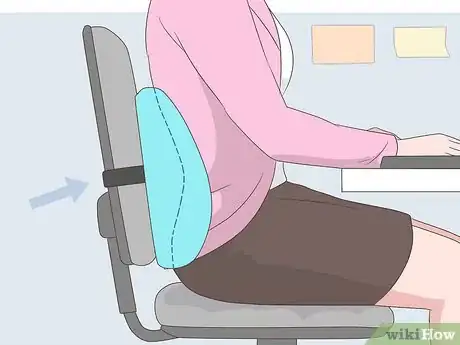
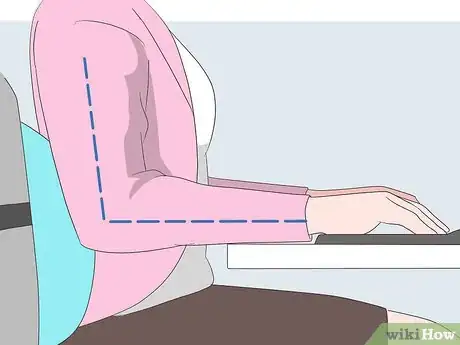

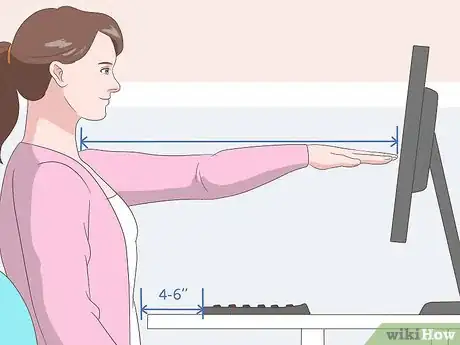
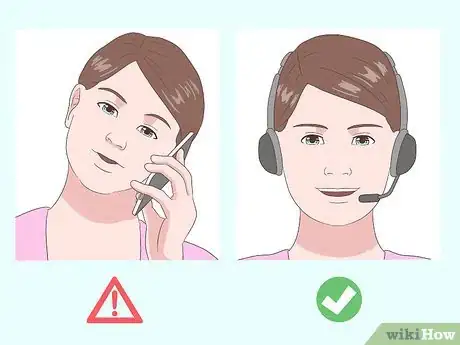
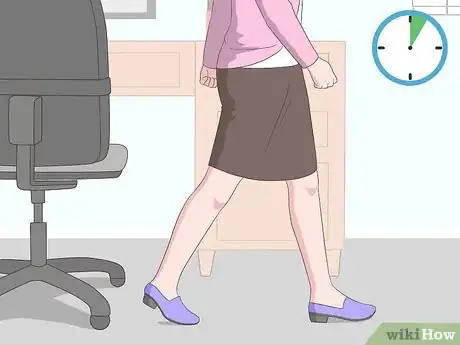
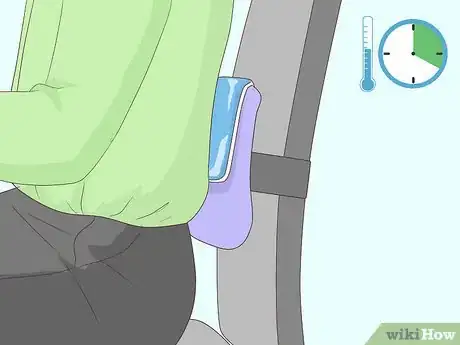
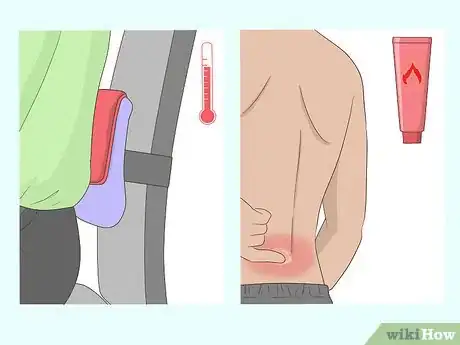



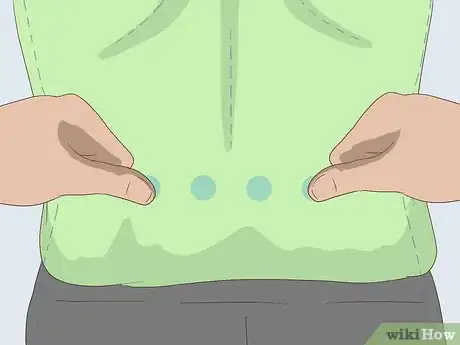
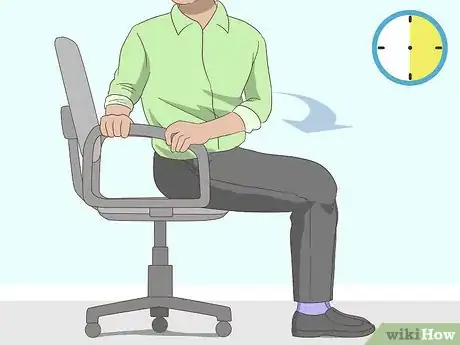


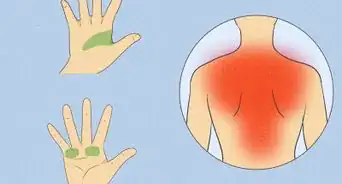

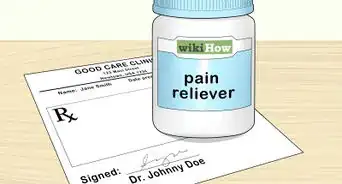





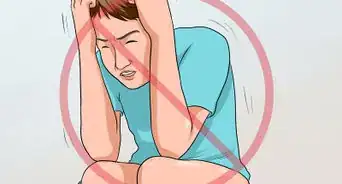


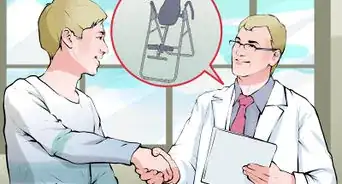












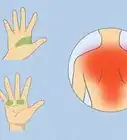






































Medical Disclaimer
The content of this article is not intended to be a substitute for professional medical advice, examination, diagnosis, or treatment. You should always contact your doctor or other qualified healthcare professional before starting, changing, or stopping any kind of health treatment.
Read More...